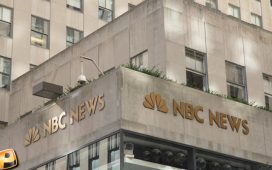Last Updated on August 22, 2017
How seriously do you take weather reports? When a major storm is on the way, do you prepare, or do you wait to see which path the storm is taking?
When you see what amounts to a consistent direction, do you assume that the storm — a purely natural occurrence that man has no way to control — will continue in that exact path without any deviation?
My closest friends live in St. Petersburg, so I had been watching the storm closely when I learned it was headed their way. I got a call from my best friend yesterday. He also works in television, and he was at work through most of the drama as his station (along with all of the others) was keeping viewers informed as Hurricane Charley made landfall. They are fine.
Others, mostly further south, are not. Hurricane Charley is being blamed for at least 16 deaths in Florida where it devastated Punta Gorda and surrounding areas.
Charley’s path moved eastward at the last minute, but the focus on the Tampa/St. Petersburg area, many in the real path of the storm seemed to have been surprised by the change of direction. Meanwhile, the Associated Press reports that meteorologists at the Hurricane Center are taking issue with that complaint: “We’re kind of surprised that people were caught by surprise,” said Meteorologist Robbie Berg.
The center had issued warnings from Tampa Bay to the Keys from the beginning. He says the media’s fixation with Tampa might have given people the wrong impression. Tampa was put under a mandatory evacuation order, and since it is the most populated area along the warning area, naturally it was going to get more attention in the coverage. But anyone in the warning area should have recognized the potential danger, no matter how much attention was being focused on Tampa; that’s why warnings are issued to begin with. “Everyone had ‘ample warning,'” Berg said. “It’s just unfortunate that certain people didn’t evacuate.”
Especially unfortunate is the belief that any location on the east side of the storm’s projected landfall would be safe; a hurricane’s strongest and most damaging winds are usually east of its eye.
I’ve never lived on the coast, primarily because I don’t want to live in a “hurricane zone.” But I’ve been through two major hurricanes — Hugo and Isabel — that were powerful enough to wreak havoc more than a hundred miles inland where I happened to be at the time. No matter what the media reported about conditions on the coast, I made sure I was prepared in case the storm continued in my path after making landfall. You just never know.
I don’t mean to sound harsh here, and I don’t mean to kick residents affected while they’re down; I am sympathetic to their plight. It is that plight that I hope will teach the rest of us that no matter how high-tech our forecasting tools may be, we’re still trying to second guess Mother Nature…and she, sooner or later, always wins.
There are already two active storms in the Atlantic poised to make their own marks. Danielle is now a category-two hurricane, but it is expected to dodge our continent completely. Earl, on the other hand, is a tropical storm that is expected to become a hurricane over the next 48 hours as it heads for the Yucatan Pennisula and southeast Texas.
It is already becoming a quite busy hurricane season.
The best any of us can do is to trust the reports, and more importantly, Mother Nature…at our own risk. Even when the skies are clear of clouds, there’s always some kind of storm right around the corner.

















